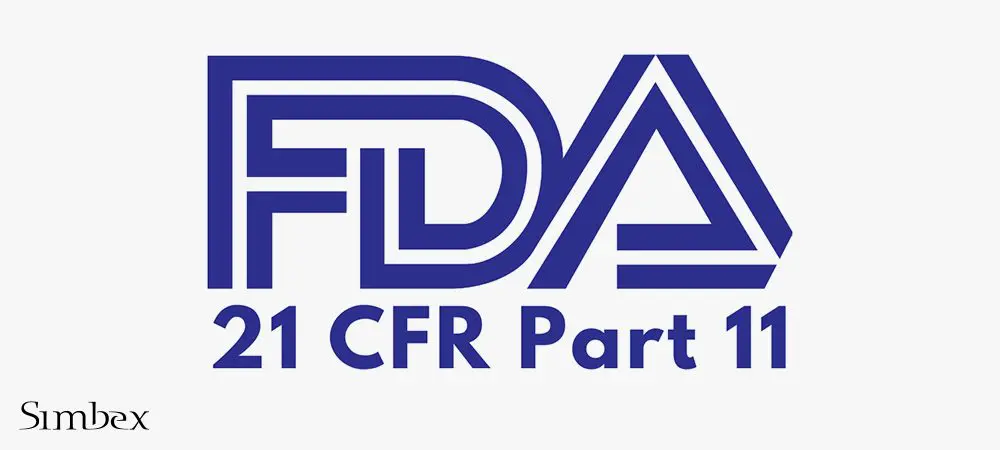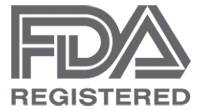Understanding FDA 21 CFR Part 11 with Cognidox

At Simbex, our partnership with Cognidox helps us provide solutions that streamline compliance, enhance quality management, and ensure adherence to FDA requirements. By leveraging Cognidox’s expertise and tools, we are committed to maintaining the highest standards in the medical device industry. We appreciate this Part 11 summary from Joe Byrne, the CEO of Cognidox.
In my blog “Understanding FDA 21 CFR part 11,” I detail how a medical device company operating in the US can establish an FDA-compliant, digital Quality Management System (QMS) by utilizing electronic records and e-signatures in place of traditional paper-based documentation and wet signatures. This involves implementing robust software solutions that ensure data integrity, security, and compliance with FDA regulations. These systems facilitate efficient document management, streamline workflows, and provide audit trails, ensuring that all electronic records and signatures are legally equivalent to their paper counterparts. At Cognidox we are happy to collaborate with Simbex to offer top-tier e-signatures and 21 CFR 11 compliance.
What is FDA 21 CFR Part 11?
FDA 21 CFR Part 11 is a section of the Code of Federal Regulations that outlines how life science companies operating in the United States can implement FDA-compliant digital Quality Management Systems. It specifically addresses the use of electronic records and e-signatures as alternatives to traditional paper-based documentation and wet signatures.
Why is it Important?
Introduced in 1996, Part 11 was the FDA’s response to the digital revolution. It aimed to:
- Enable life science companies to leverage digital tools for faster product development and market entry.
- Maintain rigorous authentication and control processes for potentially life-critical products.
Who Does Part 11 Apply To?
Part 11 applies to virtually all life science developers releasing products in the U.S. market. Even if you maintain paper “master copies” of documentation, the regulation likely applies if you store or upload any documents to computer systems as part of your development or quality processes.
The requirements of the system used for electronic record keeping to ensure part 11 compliance include:
-
System Validation:
Implement and maintain a rigorous system validation process. This includes regular validation of data management systems, comprehensive documentation of validation activities, re-validation following significant system changes, and meticulous maintenance of validation records.
-
Record Accessibility:
Ensure all electronic records are accessible in human-readable formats. Implement systems capable of producing accurate and legible copies of electronic records and maintain these copies for the required retention period.
-
Document Security:
Establish robust security measures to protect the integrity of electronic documents. Implement controls to prevent unauthorized access, modifications, or deletions. Ensure that only authorized personnel can make changes to documents and maintain a comprehensive audit trail of all modifications.
-
Data Backup and Recovery:
Develop and implement a comprehensive data backup and recovery strategy. This should include regular backups, secure off-site storage of backup data, and documented procedures for data recovery in the event of system failures or data loss incidents.
-
Audit Trail Implementation:
Incorporate a detailed and secure audit trail system. This should record all significant events within the electronic system, including user actions, data modifications, and system processes. Ensure the audit trail is tamper-proof and provides a chronological record of events.
-
System Access Control:
Implement stringent access control measures. This includes unique user identification, secure password policies, and role-based access controls. Regularly review and update access privileges to maintain system security and data integrity.
-
Operational Checks:
Establish a regime of regular operational checks to ensure system integrity. This includes verifying the correct functioning of input/output devices, confirming data accuracy, and validating system performance against predefined parameters.
-
Personnel Training and Competency:
Implement a structured training program for all personnel involved in system operations. Maintain detailed training records, conduct regular competency assessments, and ensure staff members are proficient in their assigned system roles before granting operational access.
-
Electronic Signature Accountability:
Establish policies and procedures for the management of electronic signatures. Ensure that electronic signatures are securely linked to their respective records and cannot be tampered with, copied, or transferred without detection, thus maintaining individual accountability.
-
Document Control System:
Implement a comprehensive document control system to manage the lifecycle of operational and maintenance documents. This system should include version control, authorized access protocols, and a complete change history for all documents.
By adopting electronic records and e-signatures in compliance with FDA 21 CFR Part 11, life science companies can modernise their Quality Management Systems, ensuring data integrity, security, and regulatory adherence. This transition not only streamlines documentation processes but also maintains legal equivalency to traditional methods. Embracing digital solutions enhances efficiency and helps companies stay competitive in the evolving regulatory landscape.
For more details download our Free FDA 21 CFR Part 11 Checklist
“Joe Byrne is the CEO of Cognidox. With a career spanning medical device start-ups and fortune 500 companies, Joe has over 25 years of experience in the medical device and high-tech product development industries. With extensive experience in scaling businesses, process improvement, quality, medical devices and product development, Joe is a regular contributor to the Cognidox DMS Insights blog where he shares expertise on scaling and streamlining the entire product development cycle, empowering enterprises to achieve governance, compliance, and rigour.”

Written by Joe Byrne



